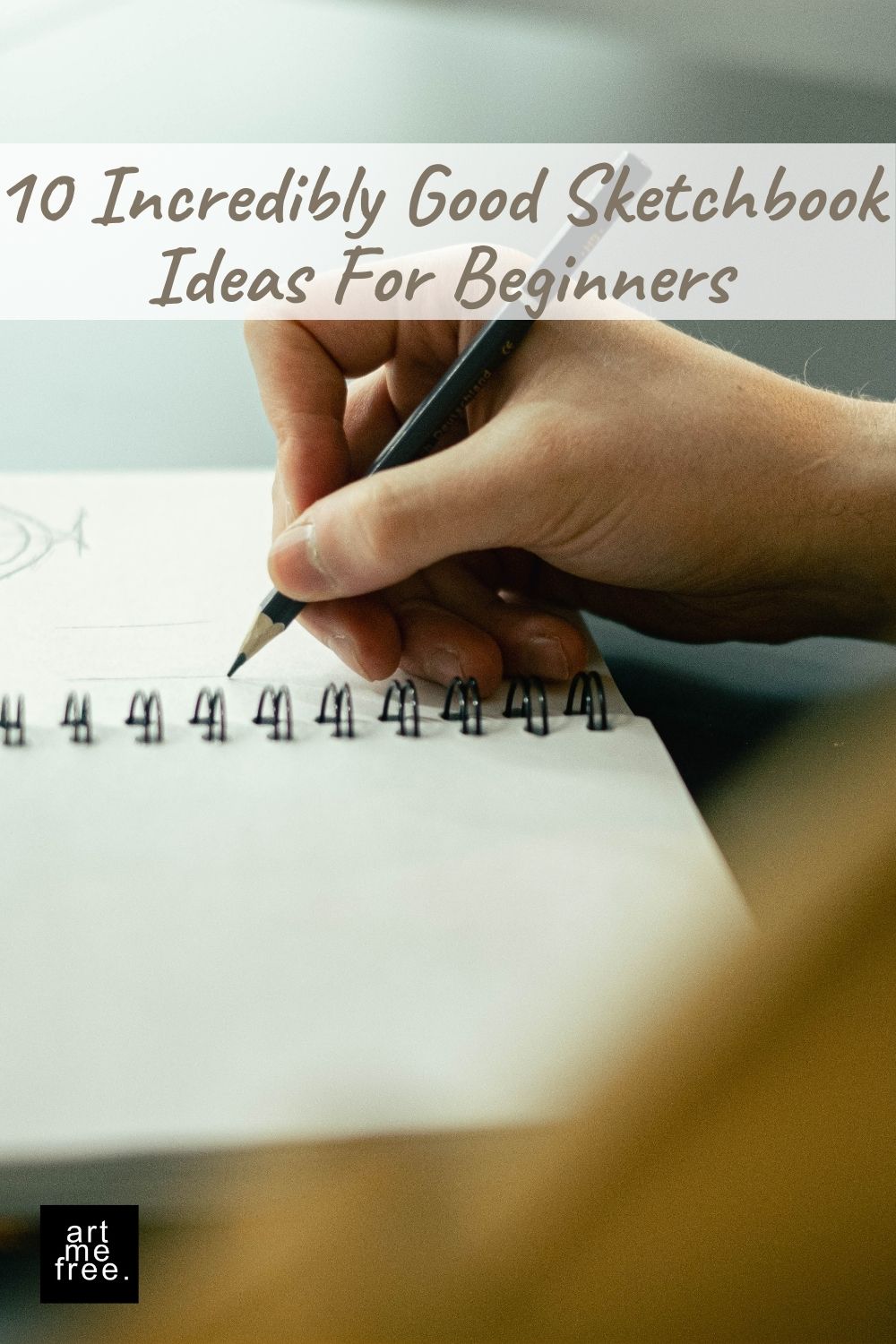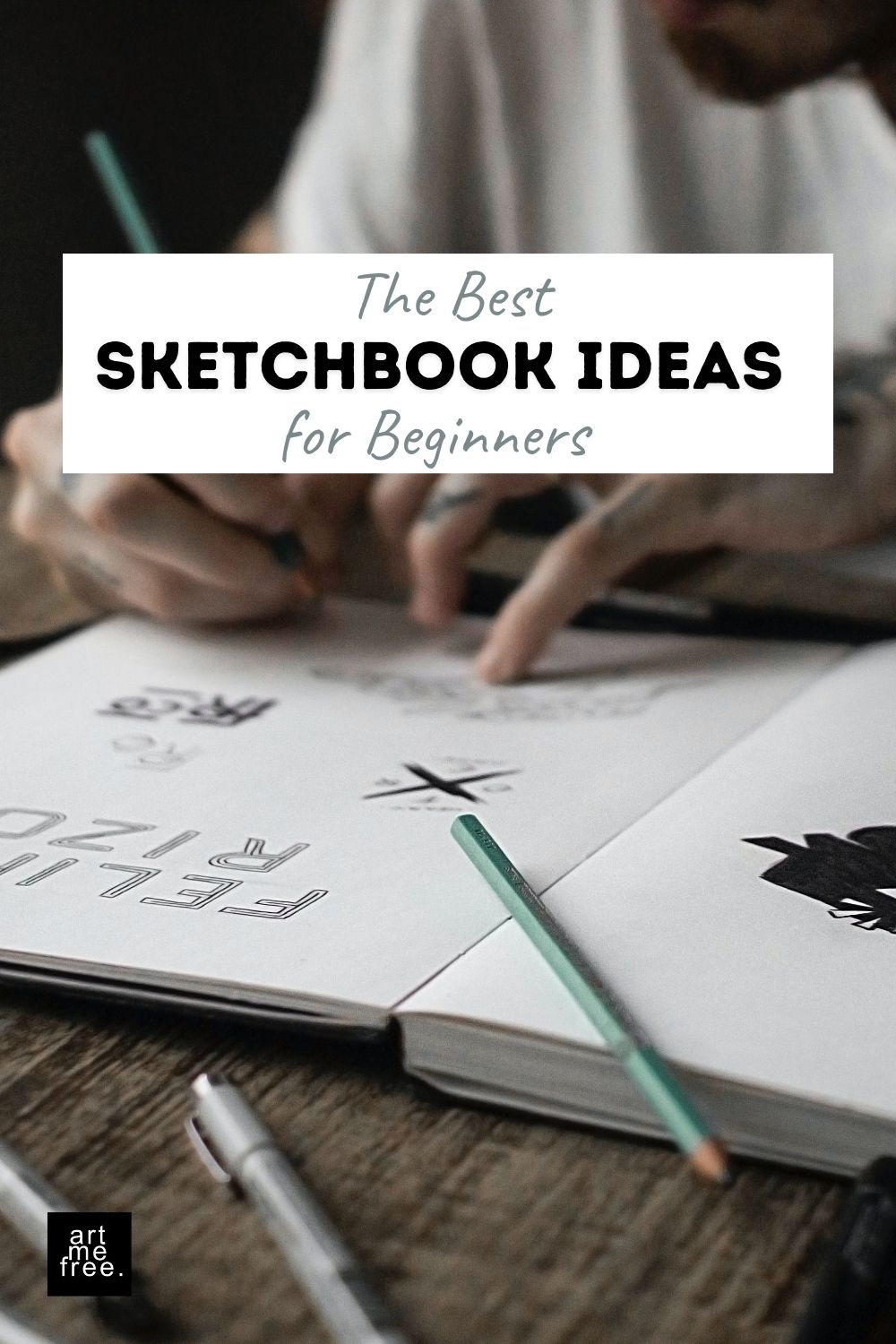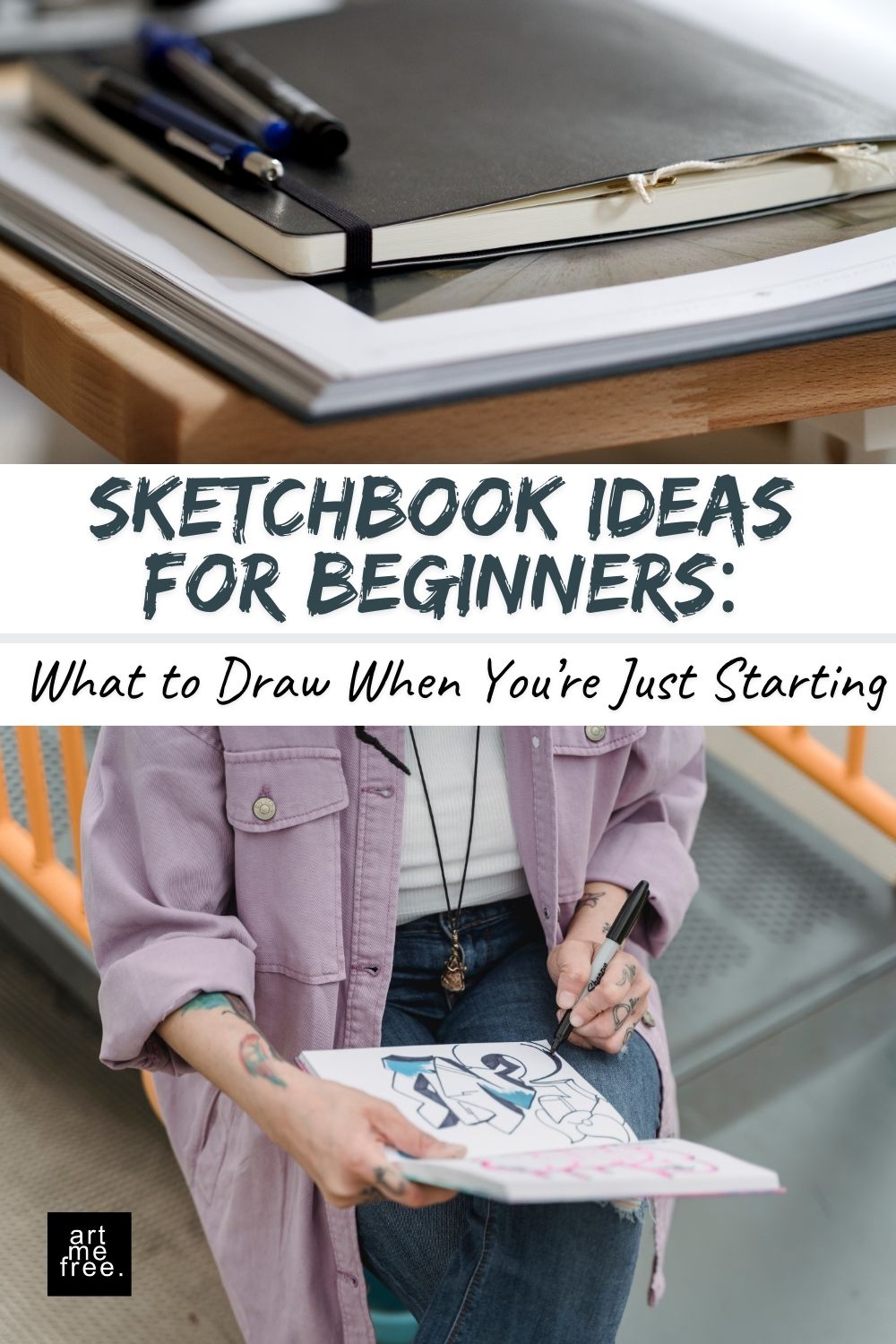
Pick a theme and draw a page full of small related objects. Keep them spaced out or clustered—there’s no wrong way.
Kitchen: mugs, forks, jars
Nature: leaves, mushrooms, pebbles
Travel: keys, tickets, bags
Stationery: scissors, pencils, tape
This is a great way to practice small drawings without needing complex ideas.
Start in one corner of the page and let the drawing grow across it. You don’t need to plan what’s next—just build as you go.
Begin with a shape or swirl
Add lines or doodles that stretch outward
Let it fill the space slowly
Switch up patterns as you move
It helps you loosen up and get used to building on a blank page.

Instead of writing about your day, draw it. It doesn’t need to be perfect or even accurate.
Pick 3–5 moments from the day
Use tiny icons or sketches to represent each one
Add simple words or thoughts
Connect ideas with arrows or lines
It’s an easy, personal way to get sketching when you don’t know what to draw.
Choose one shape—like a triangle or circle—and fill the page using only that shape in different variations.
Draw some large, some small
Stack, overlap, or mirror them
Add textures or shading inside
Turn them into tiny scenes or objects
It’s simple, and it pushes your creativity without needing a subject.
Use a quote, word, or phrase and build a page around it using doodles and decorative elements.
Letter the text in the center
Doodle small objects related to the theme
Add borders, banners, or lines
Try mixing handwriting and drawing
This is especially fun if you like journaling or want to add personality to your sketchbook.

Draw something inside a shape—like a jar, circle, or heart. The shape gives you a clear space to work within.
Fill it with patterns or textures
Create a mini scene or world inside
Draw tiny objects floating in the shape
Try mixing organic and geometric styles
The frame helps you stay focused and makes the page feel finished quickly.
Give yourself permission to just make a mess—no expectations, no pressure.
Scribble, layer, or test out pens
Draw over older lines
Try fast, loose marks
Let it be playful and chaotic
It’s perfect for days when you want to draw but don’t know where to start.
Think of a tiny memory and draw it. It could be a snack, a street corner, a conversation—anything simple.
Use soft lines or abstract marks
Add light shading or textures
Sketch from imagination, not accuracy
Include a small note or label
You don’t need a big story—just a quiet moment.

Split the page in two halves and explore contrast—both visual and emotional.
Calm vs. chaotic
Light vs. dark
Real vs. imaginary
Soft lines vs. bold shapes
This one’s fun to return to and builds confidence in your creative voice.
Make a few random marks on the page, then turn them into something. No planning—just play.
Find shapes inside the scribbles
Turn them into animals, plants, or made-up objects
Add eyes, patterns, or faces
Keep layering until the page feels alive
This is a great reminder that ideas often come after the first mark—not before.
These sketchbook ideas for beginners are here to help you get started, keep going, and enjoy every page—even when it’s messy or simple. There’s no “right way” to fill a sketchbook. The goal is to draw something and let it grow from there.
Pin this post for when you need a little boost, and visit the artmefree shop if you’d like to surround yourself with creative energy that supports your sketching journey.

To provide you with an optimal experience, we use technologies such as cookies to store and/or access device information. If you consent to these technologies, we may process data such as browsing behavior or unique IDs on this website. If you do not give or withdraw your consent, certain features and functions may be impaired.